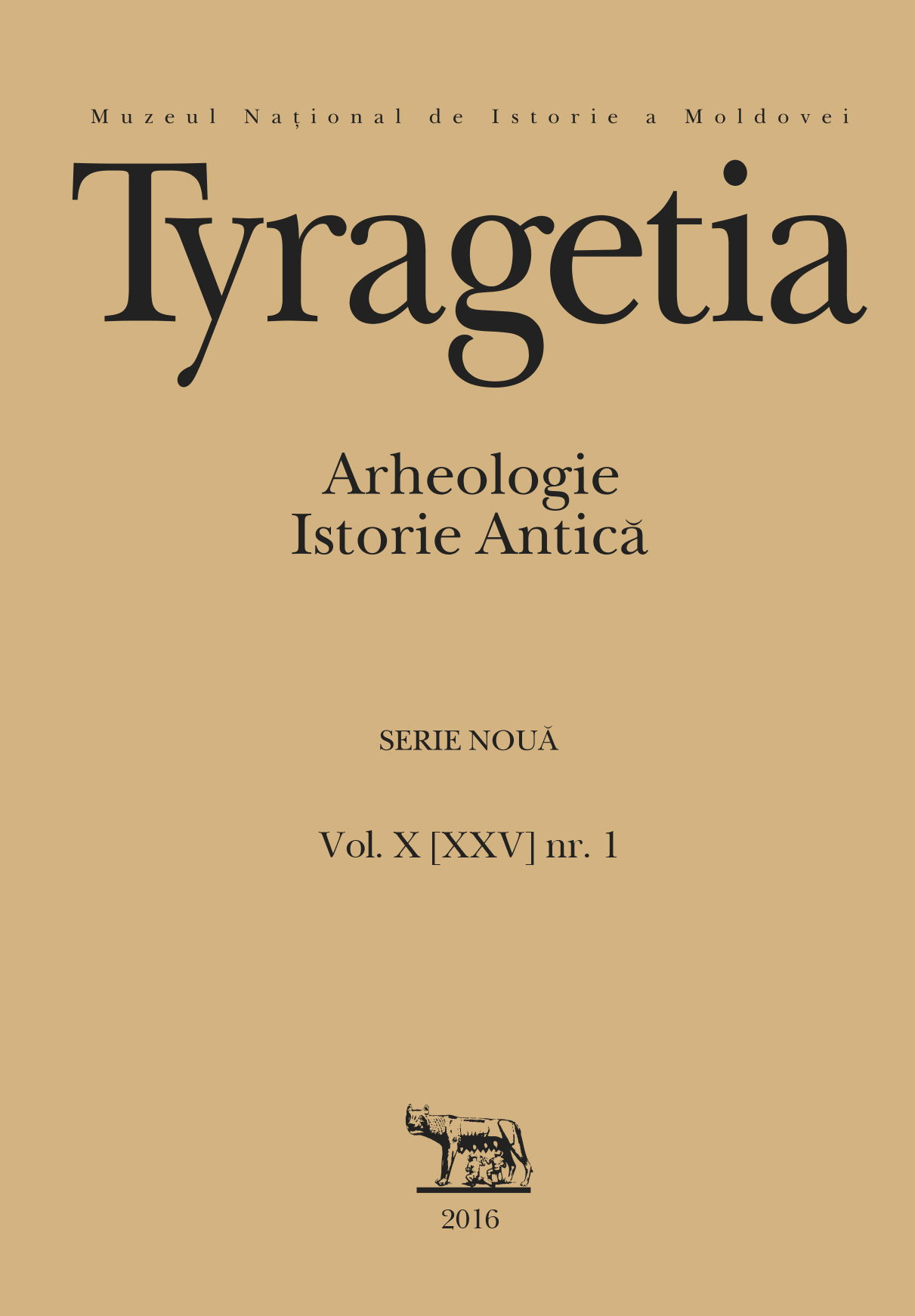Клад эпохи поздней бронзы с клепаным сосудом из Восточного Казахстана
A Late Bronze Age hoard with a riveted vessel from East Kazakhstan
Author(s): Galina Kushch, Gulnara Djumabekova, Sergey V. Demidenko, Galiya A. BazarbayevaSubject(s): History, Essay|Book Review |Scientific Life
Published by: Muzeul Naţional de Istorie a Moldovei
Keywords: East Kazakhstan; Bronze Age; hoard; metal tools; cauldron
Summary/Abstract: This article presents a hoard of the Bronze Age metal objects found in the East Kazakhstan region. Parallels to the items from the hoard are found among antiquities of the Andronovo culture of the Altai, the Tien Shan area, Jetysu, Xinjiang. The assemblage from Zaisan published here enlarged the group of hoards typical for the Late Bronze Age. The most interesting objects among the ones included in the hoard are the riveted cauldron and the axe with curved butt and grid decoration.Archaeological studies revealed the wide distribution of axes with curved butts that allow us to consider them as characteristic instruments of the Late Bronze Age period in the areas of East Kazakhstan, the Altai, Jetysu, Central Asia, and the northern part of Central Asia. Researchers came to the conclusion that this type of axes can be dated to the 12th - 9th (poss. 8th) centuries BC.Metal vessels of the Late Bronze Age (especially, the copper ones) are rarely found in the eastern part of the Eurasian steppes. Besides the cauldron described in the article, some metal vessels were discovered in Central Kazakhstan at the cemeteries of Ashchisu and Nurataldy-1 (20th - 19th centuries BC). Also, similar objects are known among the materials of the Izmailov cemetery in East Kazakhstan, and metal items of the Andreevka hoard from south-eastern Kazakhstan dated to the 12th - 9th (poss. 8th) centuries BC.Meanwhile, the closest parallels to the cauldron from the Zaisan hoard can be seen in the western part of Eurasia. Taking into account V.S. Bochkarev’s classifi cation that consists of three main groups of metal cauldrons, the vessel from East Kazakhstan may occupy an intermediate position between the groups IIB and IIIB. This allows us to date the cauldron to the end of the 13th - 12th centuries BC, while the more probable date for the Zaisan hoard as a whole lays within the range of the 12th - 9th centuries BC.
Journal: Tyragetia (Serie Nouă)
- Issue Year: X/2016
- Issue No: 1
- Page Range: 201-210
- Page Count: 10
- Language: Russian

